Spiti Valley Tour Cost & Packages – Adventure & Group Trips
Published on April 18, 2025
Spiti Tour Package : Spiti Valley, located in the northeastern part of Himachal Pradesh, is a high-altitude desert region surrounded by rugged mountains and deep valleys. Known for its stark beauty, ancient monasteries, and unique culture, Spiti has become a sought-after destination for travelers seeking adventure and spiritual experiences. The valley is famous for its breathtaking landscapes, including the stunning Chandratal Lake, the surreal Pin Valley, and the iconic Key Monastery, which dates back to the 11th century.
Tourists are drawn to Spiti for its offbeat charm, offering activities like trekking, camping, and exploring remote villages. Its isolation and challenging terrain make it an ideal destination for adventurers and peace seekers alike. A Spiti tour package ensures a seamless experience, covering key attractions and providing comfortable stays despite the region’s remote nature. From the high passes of Kunzum and Rohtang to the barren yet mesmerizing vistas, Spiti promises an unforgettable journey into the heart of the Himalayas. Its unique blend of natural beauty, spirituality, and adventure makes it a must-visit destination for every traveler.

Discover the Real Cost of a Spiti Valley Tour
A trip to Spiti Valley is an unforgettable experience, but understanding the expenses involved can help you plan your journey better. From accommodation to activities, here’s a detailed breakdown of what you can expect:
Stay Options in Spiti
Spiti offers a range of accommodations to suit every traveler’s budget and preferences:
- Budget Stays : Guesthouses or homestays cost ₹800–₹1,500 per night. These are perfect for travelers seeking an authentic local experience.
- Mid-Range Options : Comfortable stays like upgraded homestays or small hotels range from ₹2,000–₹4,000 per night.
- Luxury Stays : Premium camps or boutique hotels start at ₹5,000 per night, offering modern amenities amid stunning landscapes.
Homestays are particularly popular as they provide a glimpse into the local way of life while being budget-friendly.
Cost of Getting Around Spiti
Transportation is a significant part of your Spiti Valley tour cost , especially given its rugged terrain:
- Shared SUVs or Tempo Travelers : Ideal for group travelers, costing ₹3,000–₹5,000 per person for the entire trip.
- Private Vehicles : Hiring a private car (like an Innova or Scorpio) costs ₹12,000–₹18,000 for the trip, depending on the distance and vehicle type.
- Self-Drive : While it saves money, self-driving requires permits and experience navigating high-altitude roads.
Most Spiti tour packages include transport, ensuring comfort and safety during your journey.
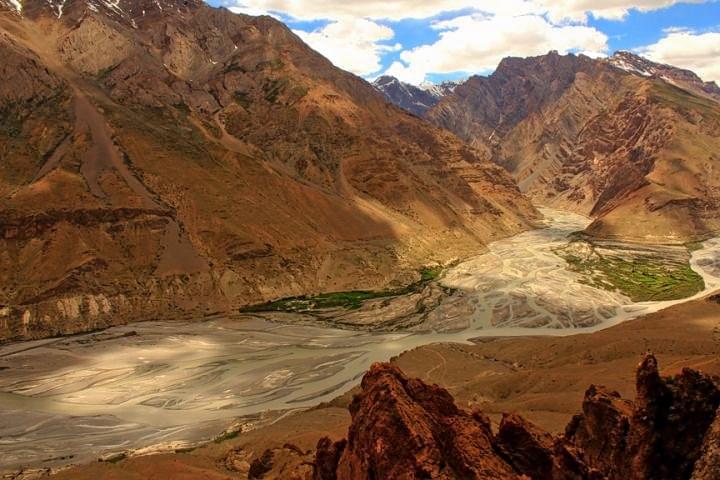
Food Expenses in Spiti
Meals in Spiti are hearty and focus on local flavors like thukpa, momos, and dal-bhaat. Here’s what you can expect to spend:
- Budget Meals : ₹200–₹400 per meal at local dhabas.
- Mid-Range Dining : ₹500–₹800 per meal at better-equipped restaurants.
Many Spiti tour packages include meals, which simplifies planning and ensures you don’t miss out on delicious local cuisine.
Permits and Fees
Certain areas in Spiti require Inner Line Permits (ILP), which are often included in Spiti tour packages . If arranged separately, permits typically cost ₹500–₹1,000 per person.
Activities and Sightseeing Costs
Spiti is full of exciting activities that add to the adventure:
- Trekking to scenic spots like Chandratal Lake or Pin Valley: ₹500–₹2,000 per activity.
- Visiting iconic monasteries like Key Monastery or Dhankar Monastery.
- Camping under the stars near rivers or meadows.
These activities are often bundled into Spiti tour packages , making them more convenient and cost-effective.
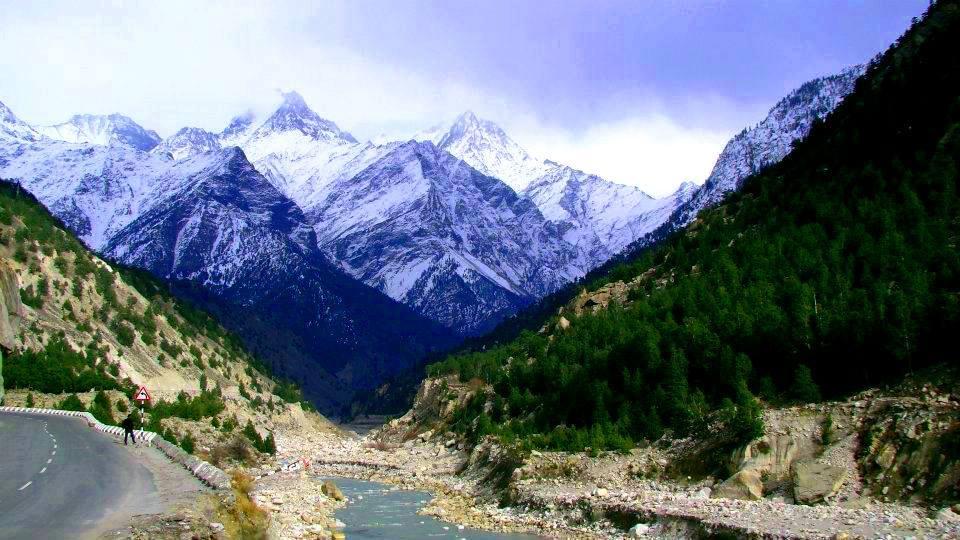
Estimated Total Cost for Your Trip
Here’s a rough estimate of the total Spiti Valley tour cost for a 7–10 day trip:
- Budget Travelers : ₹10,000–₹12,000 per person (basic stays, shared transport).
- Mid-Range Travelers : ₹15,000–₹25,000 per person (comfortable stays, private transport).
- Luxury Travelers : ₹30,000+ per person (luxury stays, exclusive services).
Why Choose a Spiti Tour Package?
Booking one of the best Spiti Valley tour packages ensures a hassle-free experience. These packages cover accommodations, transportation, meals, permits, and guided sightseeing, offering great value for money. With everything pre-planned, you can focus on soaking in the breathtaking beauty of Spiti without worrying about logistics.
Plan your adventure today and make the most of your journey with a well-designed Spiti tour package !
Best Spiti Tour Packages – What’s Included & What’s Not
Planning a trip to Spiti Valley? Choosing the right Spiti tour package can make all the difference in ensuring a seamless and memorable journey. To help you make an informed decision, here’s a detailed breakdown of what’s typically included and excluded in these packages:

What’s Included in Spiti Tour Packages
-
Accommodation
- Most packages include stays at guesthouses, homestays, or camps, depending on your budget.
- Options range from basic, no-frills accommodations to comfortable mid-range stays or luxury tents.
-
Transportation
- Round-trip transportation from major cities like Delhi, Shimla, or Manali is usually covered.
- Shared SUVs, Tempo Travelers, or private vehicles are provided, depending on the package type.
- Experienced drivers familiar with high-altitude terrains are included for safety and convenience.
-
Meals
- Many best Spiti Valley tour packages include meals (breakfast, lunch, and dinner).
- Local cuisine such as thukpa, momos, and dal-bhaat is served, giving you a taste of authentic Himachali flavors.
-
Sightseeing & Activities
- Guided visits to popular attractions like Key Monastery, Chandratal Lake, Pin Valley, and Dhankar Lake.
- Trekking, camping, and monastery tours are often part of the itinerary.
- Inner Line Permits (ILP) and other necessary permits are usually included.
-
Local Guides & Support
- Some packages offer experienced local guides who provide insights into Spiti’s culture, history, and geography.
- Ground support staff for camping and trekking activities may also be included.

What’s Not Included in Spiti Tour Packages
-
Personal Expenses
- Costs for shopping, souvenirs, or optional activities like river rafting or additional treks are not covered.
- Expenses for beverages, snacks, or meals outside the planned itinerary are excluded.
-
Adventure Activities
- While some packages include basic trekking or sightseeing, specialized adventure activities like paragliding, skiing, or advanced mountaineering may come at an extra cost.
-
Travel Insurance
- Travel insurance for medical emergencies, trip cancellations, or high-altitude sickness is not included. It’s advisable to purchase this separately for added safety.
-
Additional Permits
- If you plan to explore restricted areas beyond standard itineraries, additional permits may need to be arranged at your own expense.
-
Tips & Gratuities
- Tipping drivers, guides, or hotel staff is not included in the package and is left to your discretion.
-
Flights or Train Tickets
- If your journey begins from a distant city, flights or train tickets to the starting point (e.g., Delhi, Shimla, or Manali) are not included.
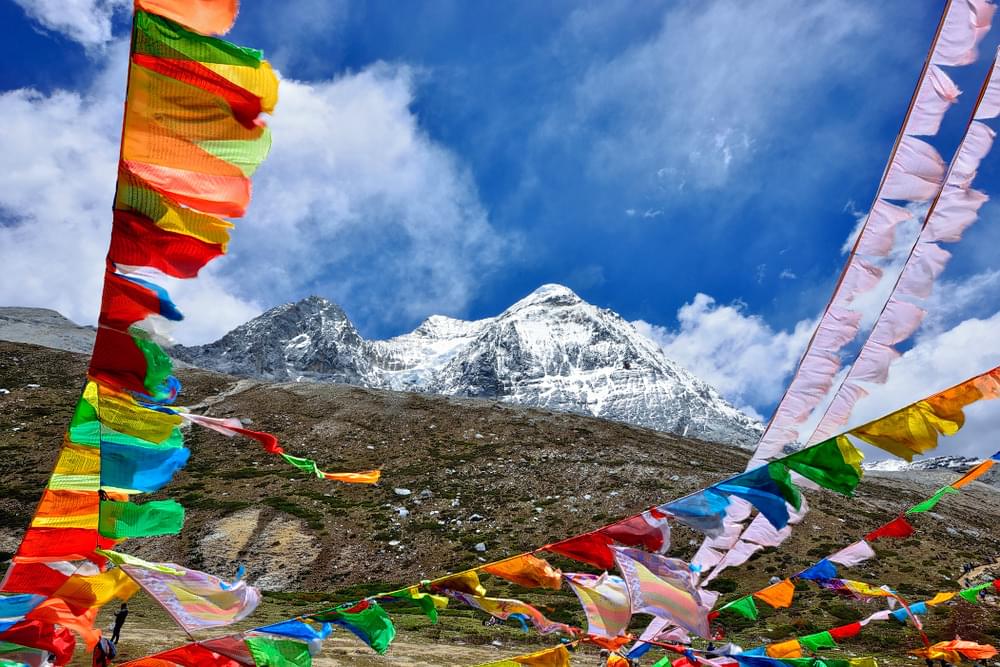
Why Choose a Spiti Tour Package?
A well-designed Spiti tour package ensures that most logistics are pre-arranged, saving you time and effort. These packages are especially helpful for first-time travelers to Spiti, as they cover essentials like accommodation, transport, permits, and guided sightseeing. By choosing one of the best Spiti Valley tour packages , you can enjoy a stress-free experience while exploring the valley’s breathtaking landscapes, ancient monasteries, and unique culture.
Before booking, always review the inclusions and exclusions carefully to ensure the package aligns with your preferences and budget. With the right planning, your Spiti adventure will be nothing short of extraordinary!
Why Group Tours to Spiti Are Gaining Popularity
Spiti Valley, with its rugged terrains, breathtaking landscapes, and unique cultural heritage, has always been a dream destination for travelers. However, in recent years, group tours have become the preferred way to explore this remote paradise. From affordability to safety and shared experiences, here’s why group tours to Spiti are gaining immense popularity:
1. Social Experience – Travel with Like-Minded Explorers
One of the biggest advantages of a Spiti Valley group tour package is the opportunity to meet like-minded travelers. Whether you’re traveling solo or with friends, group tours offer a chance to bond over shared adventures, stories, and experiences.
- Perfect for solo travelers who want companionship.
- Couples can enjoy meeting new people while still having private moments with tailored options like Spiti Valley packages for couples .
- Group dynamics add fun to activities like trekking, camping, and sightseeing.
The camaraderie of a group makes the journey as memorable as the destination itself.

2. Safety in Numbers – Peace of Mind in Remote Areas
Spiti’s high-altitude terrain and unpredictable weather can be challenging, especially for first-time travelers. Group tours ensure your safety with:
- Experienced guides and drivers familiar with the region’s roads and conditions.
- Pre-arranged accommodations and transportation, reducing risks associated with last-minute planning.
- Emergency support systems in place, including medical assistance and backup vehicles.
For those booking a Spiti tour package from Delhi , group tours provide peace of mind, knowing that all logistics are handled by professionals.
3. Affordability – Shared Costs Make It Budget-Friendly
Group tours are often more affordable than planning a trip independently. By splitting costs like transportation, permits, and accommodations, travelers save significantly:
- Shared SUVs or Tempo Travelers reduce individual expenses.
- Budget-friendly Spiti Valley group tour packages start at ₹8,000–₹12,000 per person, making it accessible for everyone.
- No hidden costs, as most packages include meals, stays, and sightseeing.
Couples can also opt for tailored Spiti Valley packages for couples , which balance romance and adventure without breaking the bank.
4. Convenience – Hassle-Free Planning
Planning a trip to Spiti involves multiple elements like permits, transportation, and accommodations, which can be overwhelming. Group tours simplify everything:
- All logistics, including permits (e.g., Inner Line Permits), are pre-arranged.
- Itineraries are well-planned, covering iconic spots like Chandratal Lake, Key Monastery, and Pin Valley.
- Meals and stays are included, ensuring a seamless experience.
Adventure enthusiasts can choose an action-packed Spiti adventure package , which includes trekking, camping, and river crossings, all organized for convenience.
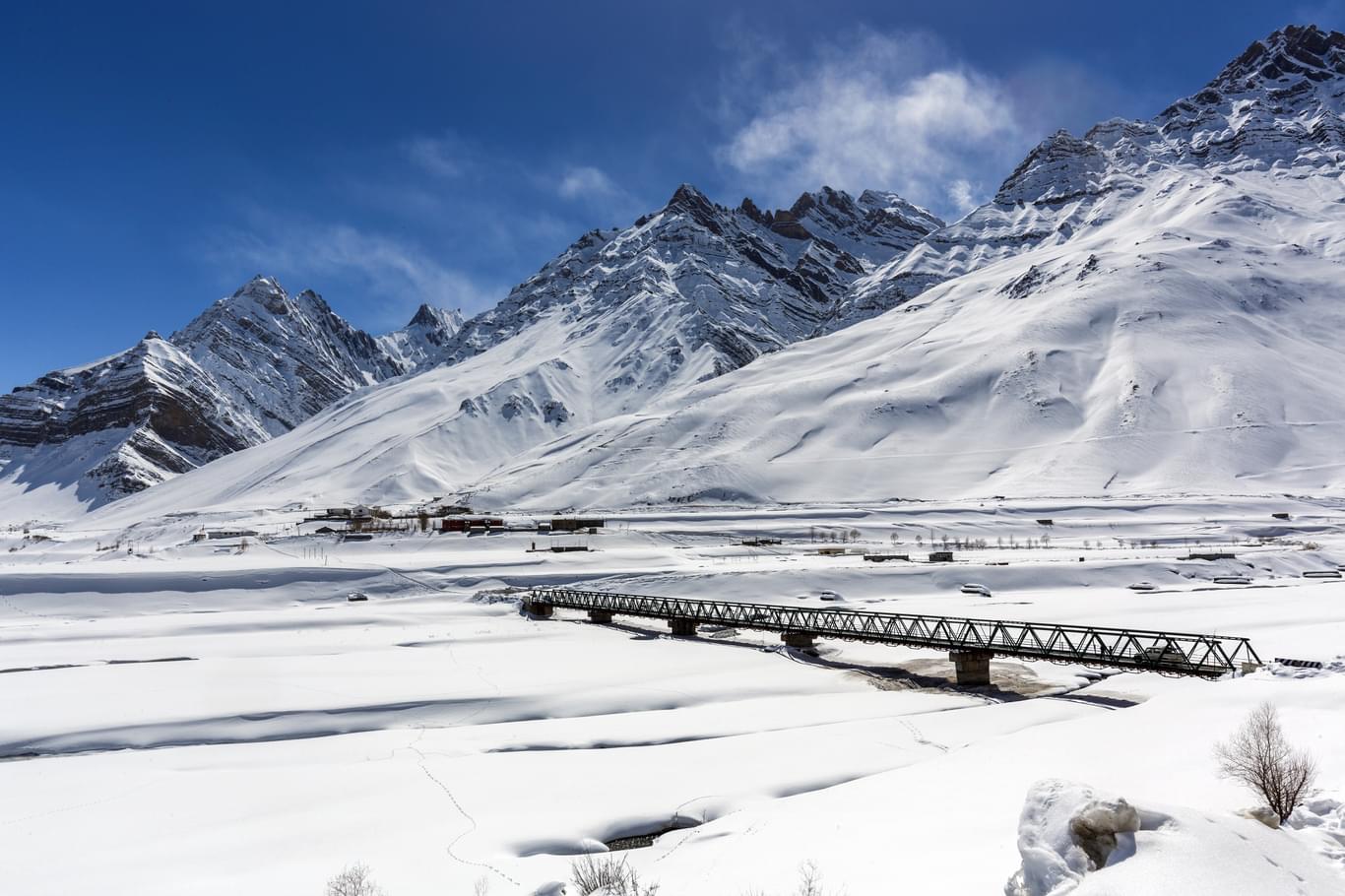
5. Tailored Options for Every Traveler
Group tours cater to diverse preferences, ensuring there’s something for everyone:
- Budget travelers : Affordable packages with basic amenities.
- Couples : Romantic getaways with cozy stays and scenic treks.
- Adventurers : Thrilling activities like high-altitude treks and off-road drives.
For those starting their journey from the capital, a Spiti tour package from Delhi ensures a smooth transition from city life to the serene mountains.
Must-Visit Places in Your Spiti Tour Itinerary
Spiti Valley, often referred to as the "Middle Land" between India and Tibet, is a treasure trove of breathtaking landscapes, ancient monasteries, and unique cultural experiences. To make the most of your trip, here’s a list of must-visit places that should be part of your Spiti tour itinerary :
Key Monastery (Ki Gompa)
- Why Visit : One of the oldest and largest monasteries in Spiti, Key Monastery is perched on a hilltop at an altitude of 4,166 meters. Its stunning architecture, ancient murals, and panoramic views of the valley make it a spiritual and visual delight.
- Highlights : Attend morning prayers, explore the museum, and enjoy the serene ambiance.
- Perfect For : History buffs, spiritual seekers, and photographers.

Chandratal Lake
- Why Visit : Known as the "Moon Lake," Chandratal is a high-altitude glacial lake surrounded by snow-capped peaks. Its crystal-clear waters reflect the sky, creating a surreal, otherworldly experience.
- Highlights : Camping under the stars, trekking around the lake, and soaking in the tranquil beauty.
- Perfect For : Nature lovers, trekkers, and couples seeking romantic moments.
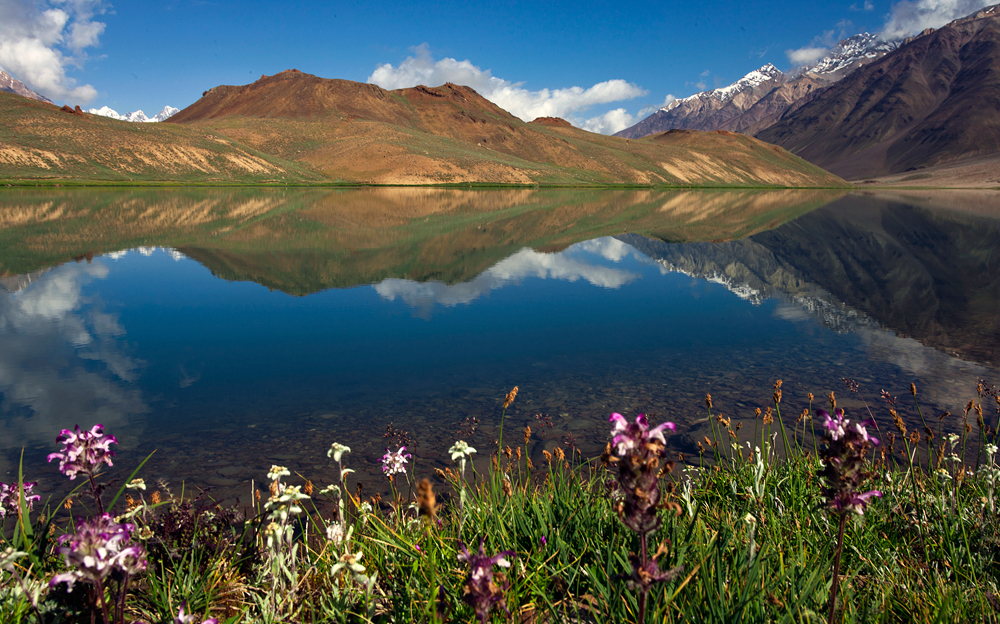
Hikkim Village & World’s Highest Post Office
- Why Visit : Hikkim is home to the world’s highest post office, located at an elevation of 4,400 meters. Sending a postcard from here is a unique experience you’ll cherish forever.
- Highlights : Interact with locals, explore the village, and enjoy the stunning views of the surrounding mountains.
- Perfect For : Offbeat travelers and those looking for quirky experiences.

Kaza – The Heart of Spiti
- Why Visit : Kaza is the administrative capital of Spiti and serves as the base for most tours. It’s a hub of culture, adventure, and stunning landscapes.
- Highlights : Explore local markets, visit nearby attractions like Langza and Komic, and enjoy cozy stays with modern amenities.
- Perfect For : Families, groups, and solo travelers looking for comfort and convenience.

Pin Valley National Park
- Why Visit : A haven for wildlife enthusiasts and trekkers, Pin Valley National Park is home to rare species like the Snow Leopard and Ibex. Its rugged terrain and untouched beauty make it a paradise for adventurers.
- Highlights : Trek through the valley, spot exotic flora and fauna, and experience the raw wilderness of Spiti.
- Perfect For : Adventure seekers and nature enthusiasts.
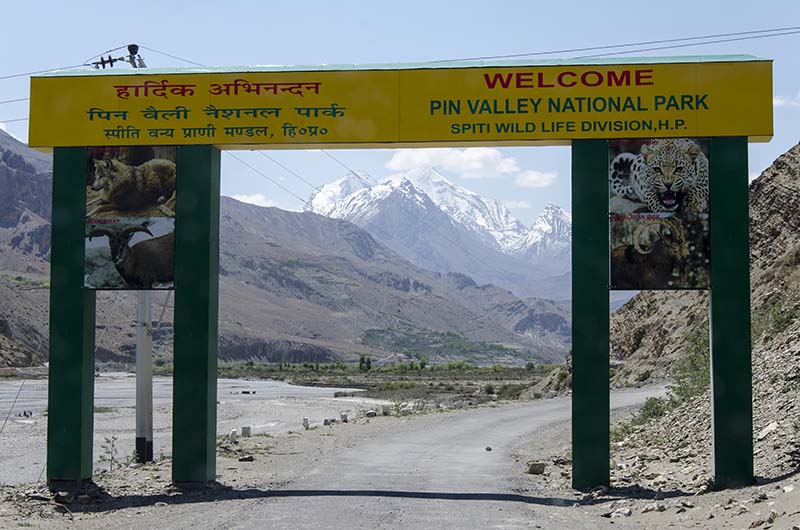
Dhankar Monastery & Lake
- Why Visit : Perched precariously on a cliff, Dhankar Monastery offers jaw-dropping views of the confluence of the Spiti and Pin rivers. Nearby, Dhankar Lake is a serene spot for a short trek.
- Highlights : Explore ancient Buddhist relics, meditate in peace, and capture stunning photos.
- Perfect For : Spiritual travelers and photography enthusiasts.

Langza Village – Fossil Paradise
- Why Visit : Langza is famous for its fossil-rich terrain and lunar-like landscape. It’s also one of the highest motorable villages in the world.
- Highlights : Spot fossils, interact with locals, and enjoy unobstructed views of the Himalayas.
- Perfect For : Offbeat explorers and geology enthusiasts.

Kunzum Pass – Gateway to Spiti
- Why Visit : At 4,590 meters, Kunzum Pass is a high-altitude mountain pass offering breathtaking views of the Chandra Bhaga ranges. The iconic Kunzum Devi Temple adds a spiritual touch to the journey.
- Highlights : Capture panoramic shots, pay homage at the temple, and enjoy the crisp mountain air.
- Perfect For : Photographers and first-time visitors to Spiti.

Tabo Monastery – Ajanta of the Himalayas
- Why Visit : Dating back to 996 AD, Tabo Monastery is one of the oldest continuously functioning monasteries in India. Its ancient murals and frescoes are a UNESCO World Heritage Site contender.
- Highlights : Explore the meditation caves, attend prayer sessions, and admire the intricate artwork.
- Perfect For : History lovers and spiritual seekers.

Your Perfect Itinerary for Your Spiti Valley Adventure
Embarking on a Spiti Valley tour doesn’t have to be overwhelming, thanks to thoughtfully crafted Spiti tour packages that balance adventure, culture, and relaxation. Here’s a detailed breakdown of an 8-day itinerary that gives you a glimpse of what to expect when you opt for a Spiti Valley group tour package or a customized plan tailored to your needs.
DAY 0: DELHI TO SHIMLA – THE JOURNEY BEGINS
Your adventure starts late at night when you gather at the designated boarding point around 9:00 PM. After meeting your team captain and fellow travelers, you’ll participate in a quick induction session to set expectations for the journey ahead. By 10:00 PM, you’ll board a comfortable vehicle for an overnight ride from Delhi to Shimla. As the city lights fade away, settle into your seat, catch up on some sleep, or simply enjoy the cool mountain breeze rushing past your window.
Pro tip: Bring along snacks, warm clothes, and music playlists to make the ride more enjoyable. This overnight journey ensures you maximize your time in Spiti and arrive fresh and ready for the adventures ahead.
DAY 1: SHIMLA TO SANGLA/CHITKUL – A GATEWAY TO SPITI
As dawn breaks, you'll find yourself arriving in Shimla, the capital city of Himachal Pradesh. After a hearty breakfast at Narkanda, where you can soak in stunning mountain views, you’ll continue your journey towards Sangla or Chitkul. Along the way, stop for lunch at Jeori or Tapri, two picturesque spots surrounded by lush greenery and towering peaks.
Once you reach Sangla/Chitkul, check into your hotel, freshen up, and unwind. Spend your afternoon exploring the serene Baspa River and the breathtaking landscapes of Sangla Valley. The combination of crystal-clear waters, dense forests, and snow-capped mountains creates a scene straight out of a postcard. Conclude your day with a delicious dinner and an overnight stay in Sangla/Chitkul.
DAY 2: CHITKUL/SANGLA TO NAKO – INTO THE HEART OF SPITI
Start your day early with a scenic drive towards Nako, passing through Powari, Spello, and Kalpa along the way. Enjoy breakfast while admiring breathtaking mountain views before stopping for lunch near the majestic Kinnaur Kailash Range. As you enter the stunning Kinnaur Valley, witness the magnificence of the Sutlej River carving its way through the rugged terrain.
Upon reaching Nako, check into your hotel and freshen up. Spend your evening strolling around Nako Village and visiting the serene Nako Lake, a sacred body of water surrounded by prayer flags and stupas. End your day with a hearty dinner and an overnight stay in Nako.
DAY 3: NAKO TO KAZA – ENTERING THE LAND OF MONASTERIES
Today marks your entry into the heart of Spiti Valley—Kaza. Start your day early with a refreshing breakfast before embarking on a scenic drive through Hangrang Valley and crossing the iconic Argo Bridge. Stop for lunch at Lossar or Yangthang, where you can savor local delicacies while soaking in panoramic views.
As you cross the Spiti River, prepare to be awestruck by the dramatic shift in landscape—from lush green valleys to barren deserts dotted with colorful prayer flags. Once you reach Kaza, check into your hotel and freshen up. You can spend the rest of the day exploring the vibrant Kaza Market or visiting the historic Key Monastery, one of the oldest and largest monasteries in Spiti. Return to your hotel for dinner and an overnight stay.
DAY 4: KAZA TO LANGZA, KOMIK, AND HIKKIM – OFF THE BEATEN PATH
Wake up to the crisp mountain air and set off on a day filled with exploration. Start by visiting Langza Village, known for its ancient 1,000-year-old Buddha statue and fossil-rich terrain. Next, head to Komik Village, home to the world’s highest-altitude village, and visit the serene Komik Monastery. Enjoy a delightful lunch here before making your way to Hikkim Village.
Hikkim is famous for hosting the world’s highest post office at 4,400 meters above sea level. Take a moment to send postcards to your loved ones—a unique souvenir from your Spiti adventure. Return to Kaza for dinner and another cozy night’s stay.
DAY 5: KAZA TO KEY MONASTERY, KIBBER, AND CHICHAM – CULTURE AND NATURE
Begin your day with a visit to Key Monastery, perched atop a hill overlooking the valley. Its intricate murals and tranquil ambiance make it a must-visit spot. Next, head to Kibber Village, the world’s highest motorable village, where you’ll enjoy lunch and explore the nearby Kibber Wildlife Sanctuary.
In the afternoon, visit Chicham Village, home to the highest bridge in Asia—the Chicham Bridge. Witness the engineering marvel firsthand and soak in the stunning views of the surrounding valley. Return to Kaza for dinner and an overnight stay.
DAY 6: KAZA TO KALPA – BACK TO KINNAUR VALLEY
Bid farewell to Spiti Valley as you begin your journey back towards Kalpa. Along the way, stop for breakfast at Powari and enjoy the scenic drive through Sumdo, Spello, and Powari. Cross the majestic Sutlej River once again and re-enter the breathtaking Kinnaur Valley. Upon reaching Kalpa, check into your hotel and freshen up.
Spend your evening strolling through Kalpa Village, visiting the historic Kalpa Monastery, and soaking in the peaceful vibes of the region. Conclude your day with a delicious dinner and an overnight stay in Kalpa.
DAY 7: KALPA TO SHIMLA TO DELHI – THE FINAL LEG
Start your day with an early morning drive towards Shimla. Stop for breakfast at Powari and enjoy the stunning views of the Kinnaur Valley. Have lunch at Rampur Bushahr, a charming town steeped in history, before continuing your journey to Shimla.
In Shimla, take some time to explore Mall Road, visit the historic Ridge and Christ Church, and indulge in a delightful dinner at a local restaurant. Board an AC Volvo or Tempo Traveller for an overnight ride back to Delhi (approximately 7-8 hours). Wake up refreshed and invigorated, ready to share your incredible Spiti Valley adventure with friends and family.
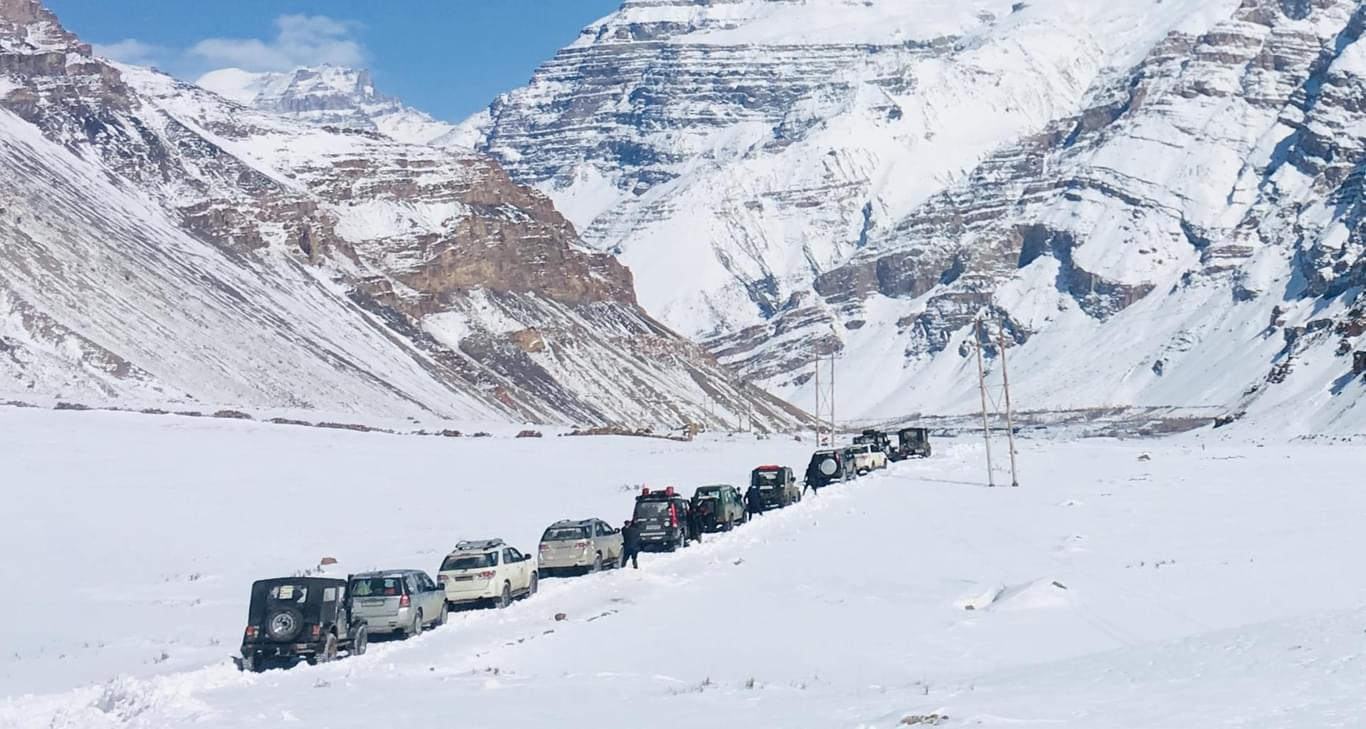
Frequently asked questions about Spiti
Where is Spiti Valley located?
Spiti Valley is situated in the northeastern part of Himachal Pradesh, India, and lies in the rain shadow of the Himalayas, bordering Tibet to the east. The valley is part of the Lahaul and Spiti district, known for its remote and rugged terrain.
What is the geography of Spiti Valley like?
Spiti Valley is a high-altitude cold desert with an average elevation ranging from 3,500 meters (11,500 feet) to 4,500 meters (14,800 feet) above sea level. The region is characterized by barren hills, deep gorges, and the Spiti River flowing through its midst.
What is the climate of Spiti Valley?
Spiti experiences a cold desert climate. Winters are extremely harsh, with temperatures dropping below freezing, and heavy snowfall often closes roads. Summers are short and relatively mild, making the period from mid-May to mid-October the ideal time to visit.
When is the best time to visit Spiti Valley?
The best time to visit Spiti Valley is from June to September when the weather is pleasant, and most roads are open. This period allows for easier access to remote villages and attractions like Chandratal Lake and Key Monastery.
How do I reach Spiti Valley?
Spiti can be reached via two main routes:
-
Shimla Route: Travel from Shimla to Kaza through Reckong Peo, covering approximately 785 km.
-
Manali Route: Travel from Manali to Kaza via Rohtang Pass and Kunzum Pass, covering about 750 km. The Manali route is typically open from June to September.
Do I need permits to visit Spiti Valley?
Indian nationals do not require permits to visit Spiti Valley. However, foreign nationals must obtain an Inner Line Permit (ILP) due to its proximity to the Tibetan border. Permits can be obtained from the District Magistrate’s office in Shimla, Kullu, or Reckong Peo.
What types of accommodations are available in Spiti Valley?
Accommodation options range from basic guesthouses and homestays in villages to more comfortable hotels and eco-resorts in Kaza, the largest town in the region. Camping is also popular, with designated campsites offering stunning views of the surrounding mountains and starry skies.
What are the main attractions in Spiti Valley?
Key attractions include:
-
Monasteries: Key Monastery, Tabo Monastery, and Dhankar Monastery.
-
Lakes: Chandratal Lake and Dhankar Lake.
-
Villages: Langza, Hikkim, and Komic.
-
Natural Sites: Pin Valley National Park and Chicham Bridge.
How much does a trip to Spiti Valley cost?
The cost of a trip varies based on factors like duration, accommodation choices, and activities. On average, budgeting around ₹1,500 to ₹2,500 per person per day is reasonable, covering accommodation, food, and local travel.
What should I pack for a trip to Spiti Valley?
Pack warm clothing, including thermal wear, jackets, gloves, and hats, regardless of the season. Sturdy trekking shoes, sunscreen, sunglasses, and a first-aid kit are also essential. If traveling during the monsoon, include rain gear.
Is Spiti Valley safe for travelers?
Spiti is generally safe for travelers. However, the high altitude can lead to altitude sickness. It's advisable to acclimatize properly, stay hydrated, and avoid strenuous activities initially.
Are ATMs available in Spiti Valley?
ATMs are available in Kaza and a few other towns. However, it's advisable to carry sufficient cash, especially when traveling to remote villages where ATM facilities may be limited.
What are the road conditions like in Spiti Valley?
Roads are generally narrow, winding, and can be rough, with occasional landslides during the monsoon season. It's recommended to travel in sturdy vehicles and with experienced drivers.
Can I rely on public transport in Spiti Valley?
Public transport is limited and may not adhere to strict schedules. Hiring a private taxi or joining organized tours offers more flexibility and convenience for exploring the region.
What are some cultural considerations when visiting Spiti Valley?
Respect local customs and traditions. Dress modestly, especially when visiting monasteries. Seek permission before photographing locals or entering religious sites. Engaging with local people respectfully is key to a positive experience.
.jpg)